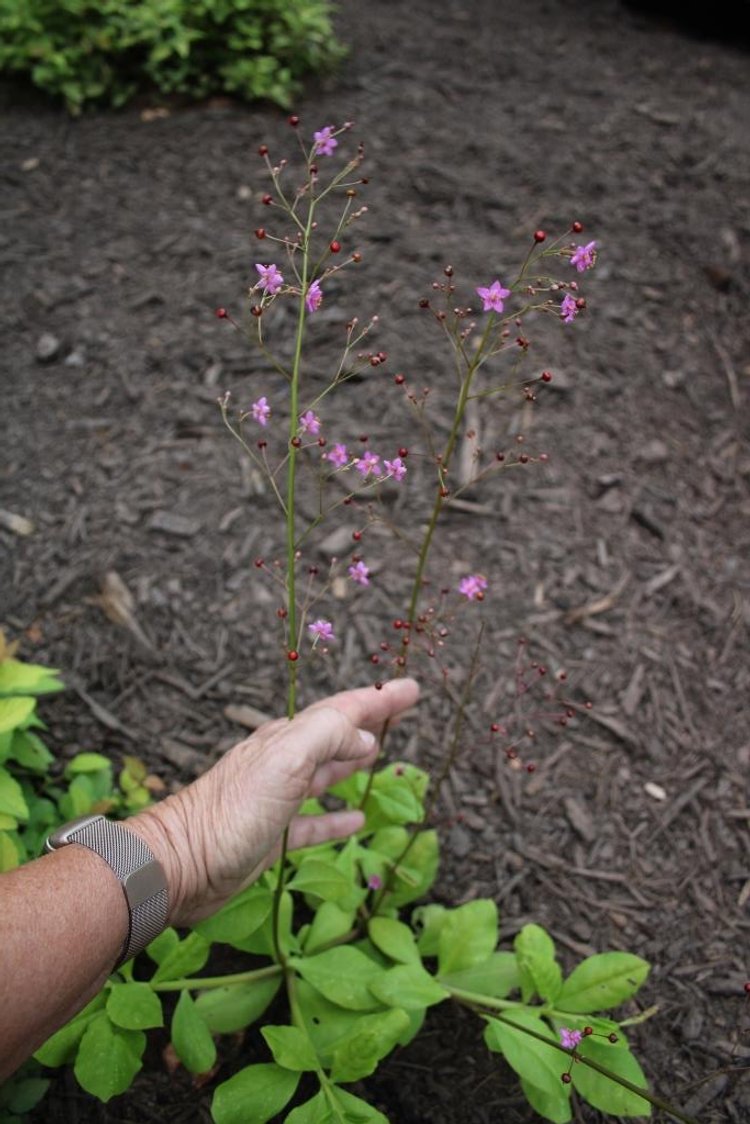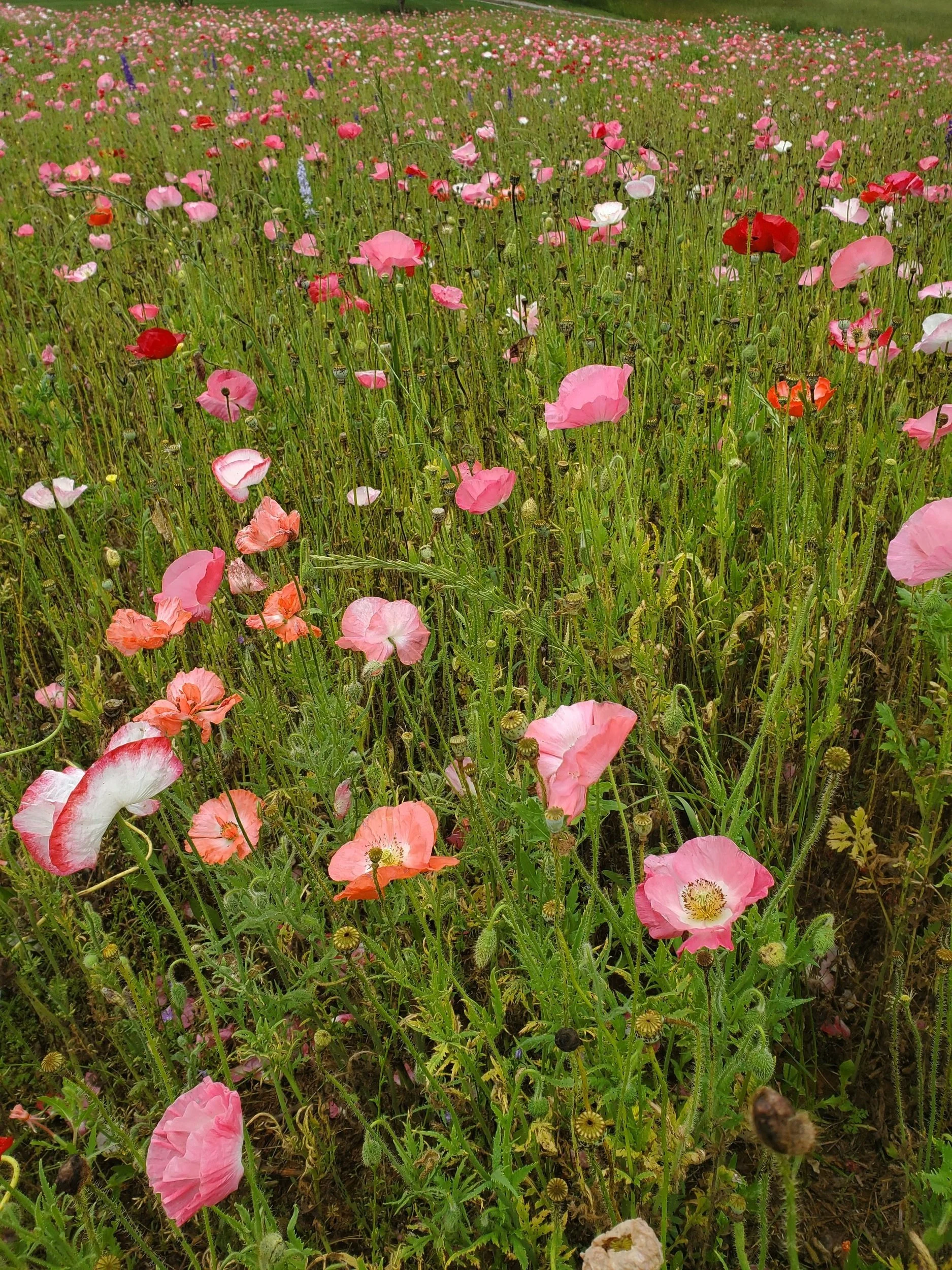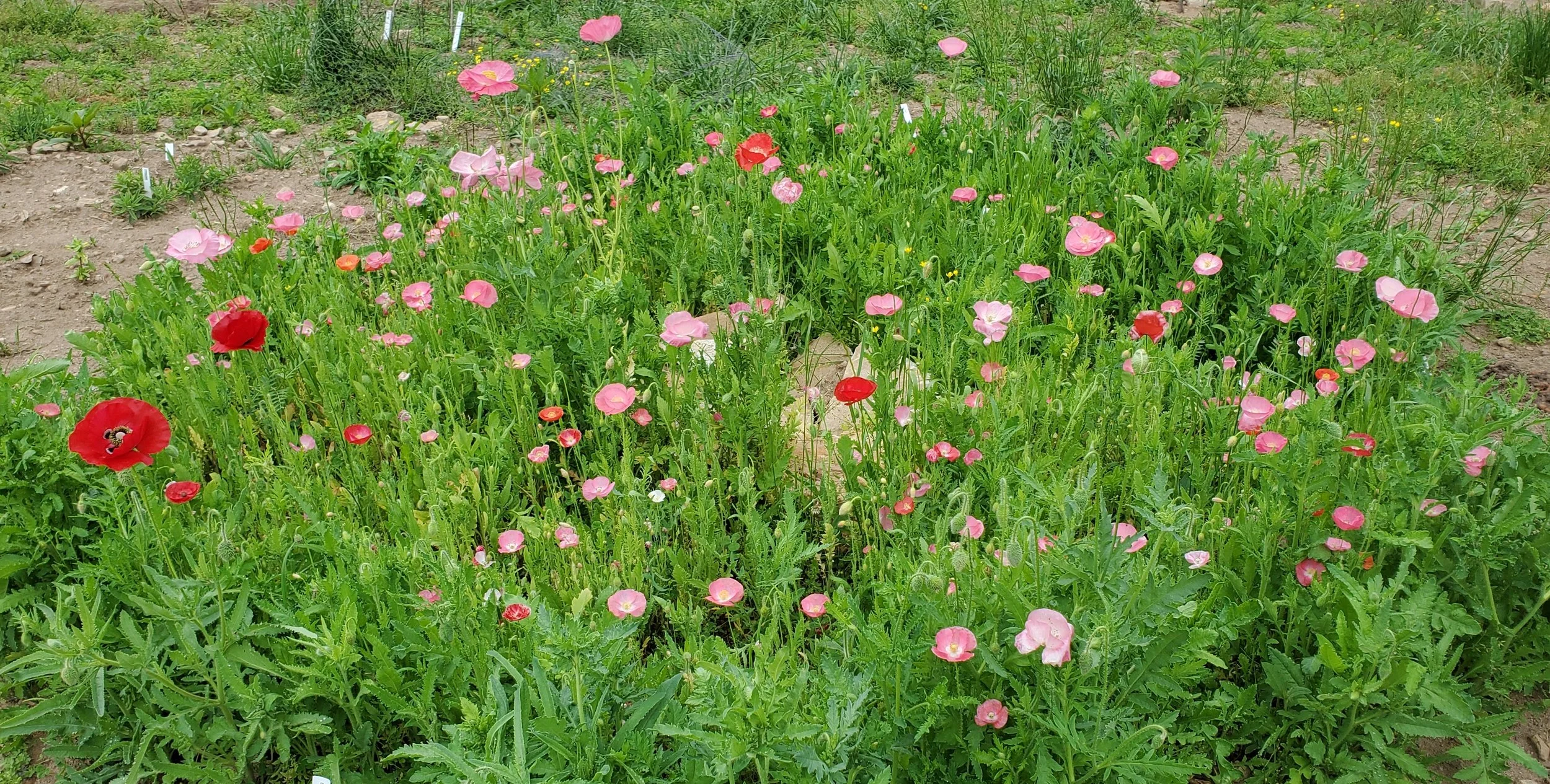Talinum paniculatum, commonly known as Jewels of Opar, is a small succulent plant that can have a large impact in your garden. The chartreuse foliage contrasts beautifully with dark groundcovers like Ajuga ‘Black Scallop’ or Ajuga ‘Chocolate Chip,’ and looks great paired with purple petunias. Fine stems support small, pink flowers. The round purplish seed heads that follow are just as attractive as the flowers. It is now classified in the family Talinaceae, formerly Portulacaceae. Like members of the Portulaca family, established plants withstand both heat and drought.
Talinum is native in the warm southeastern U.S. (NC to FL) and Latin America. It is cold tender where I live (zone 7b), dying with the first hard freeze, but reseeds so readily that it functions as a perennial in the typical garden. It hardy in zones 9-11, and even into zone 8 if the winter is mild. If you want plants to reseed, do not remove the spent flowers and their resulting capsules. Each small, round seed capsule contains numerous, tiny black seeds. Seeds saved from the prior year can be scattered in spring where they are intended to grow as soon as the chance of frost is past. Any extras are easy to pull up.
Jewels of Opar tolerates a wide range of sunlight and soil fertility. For the brightest yellow-to-chartreuse leaf color, give plants partial shade. Full sun makes the leaves turn a darker green, while too much shade results in a weak, leggy plant Mature plants average 18-24 inches in height. Plants prefer a sandy, well-drained soil but tolerate clay well. Richer soils result in a taller plant. Leaves are reputed to be edible as a spinach or lettuce substitute, but I have not eaten any of them so I cannot offer an opinion.
In the dappled shade of crepe myrtles, Talinum (Jewels of Opar) offers a nice contrast to Ajuga and Hosta.






